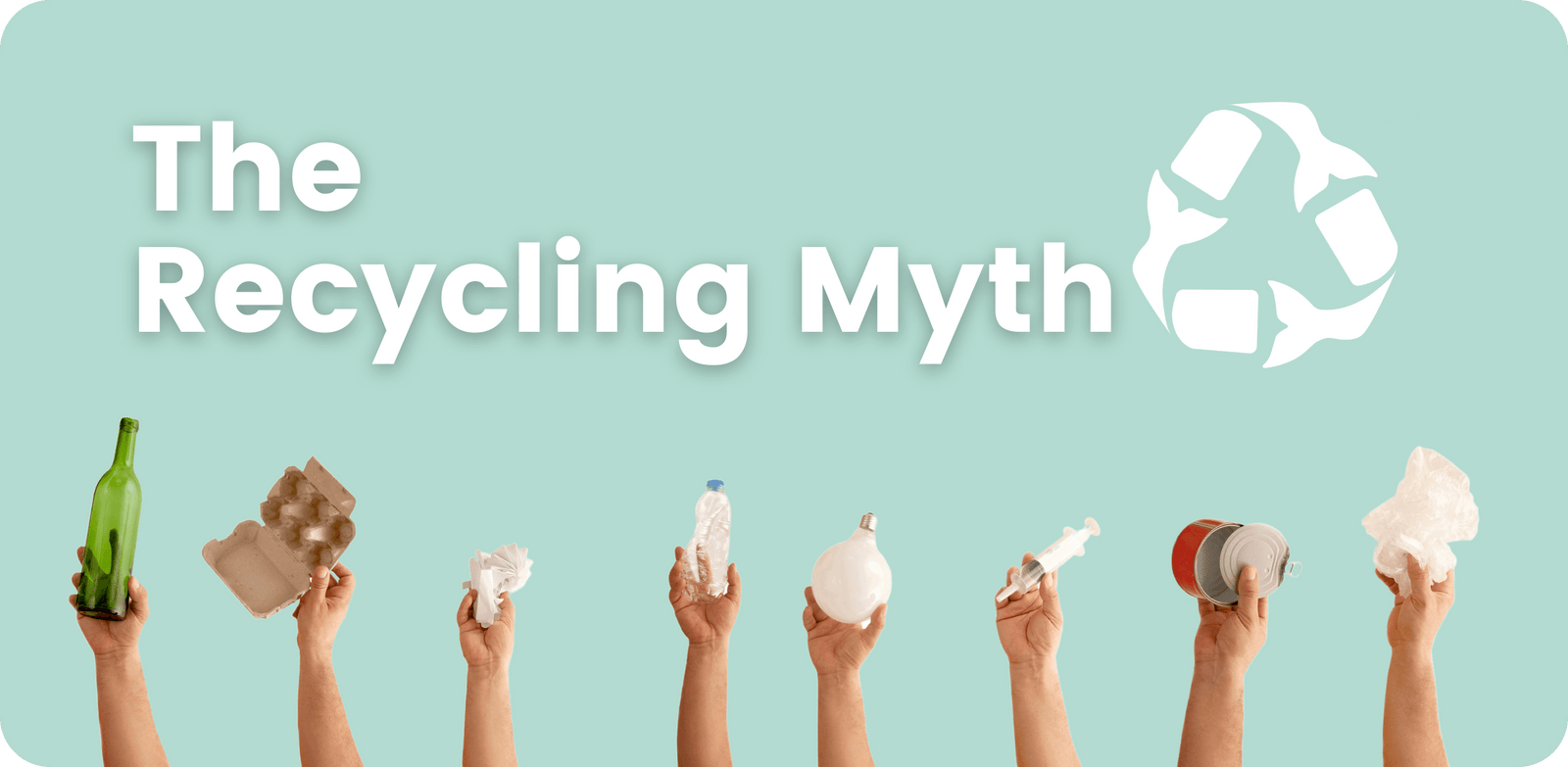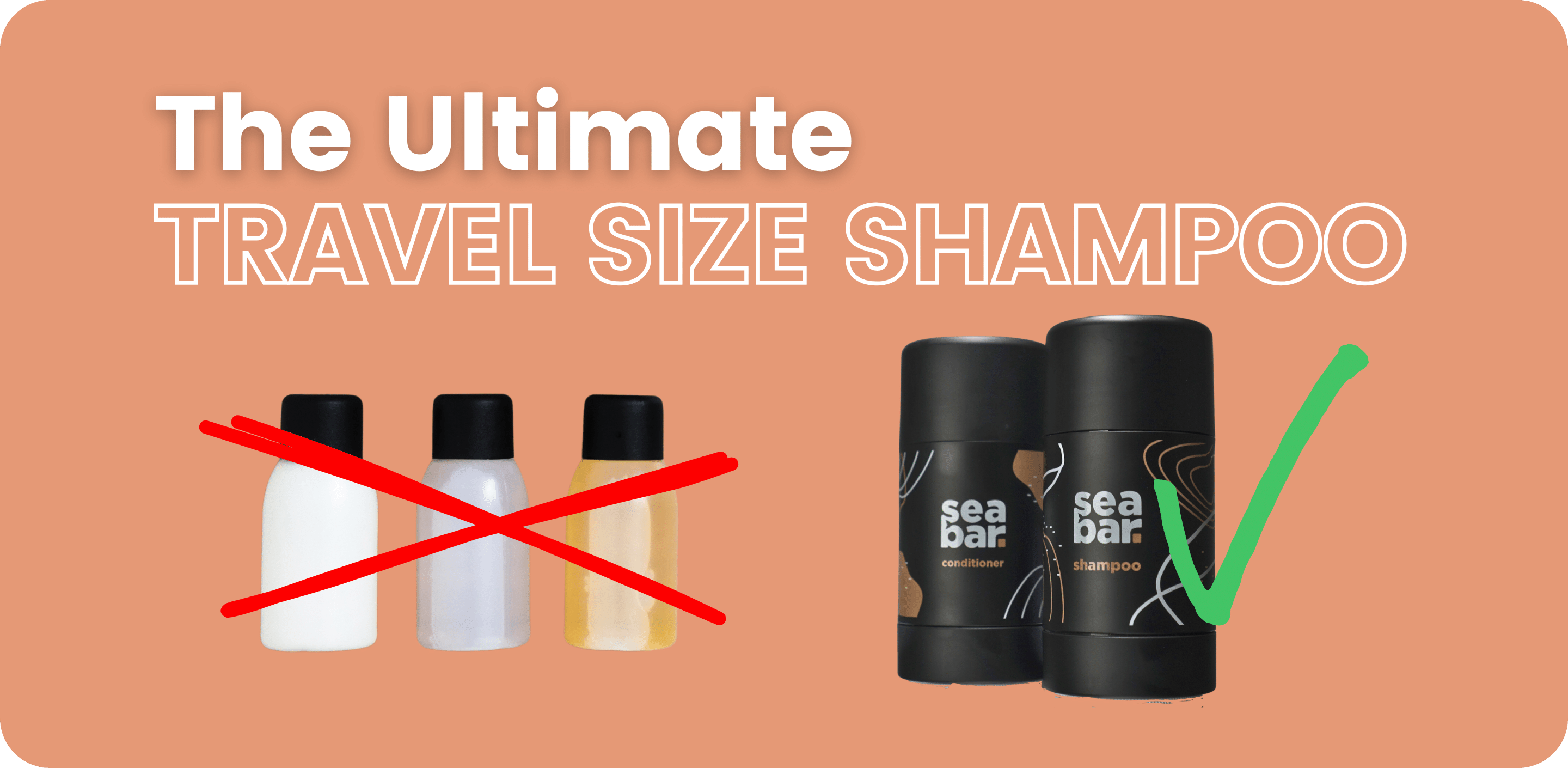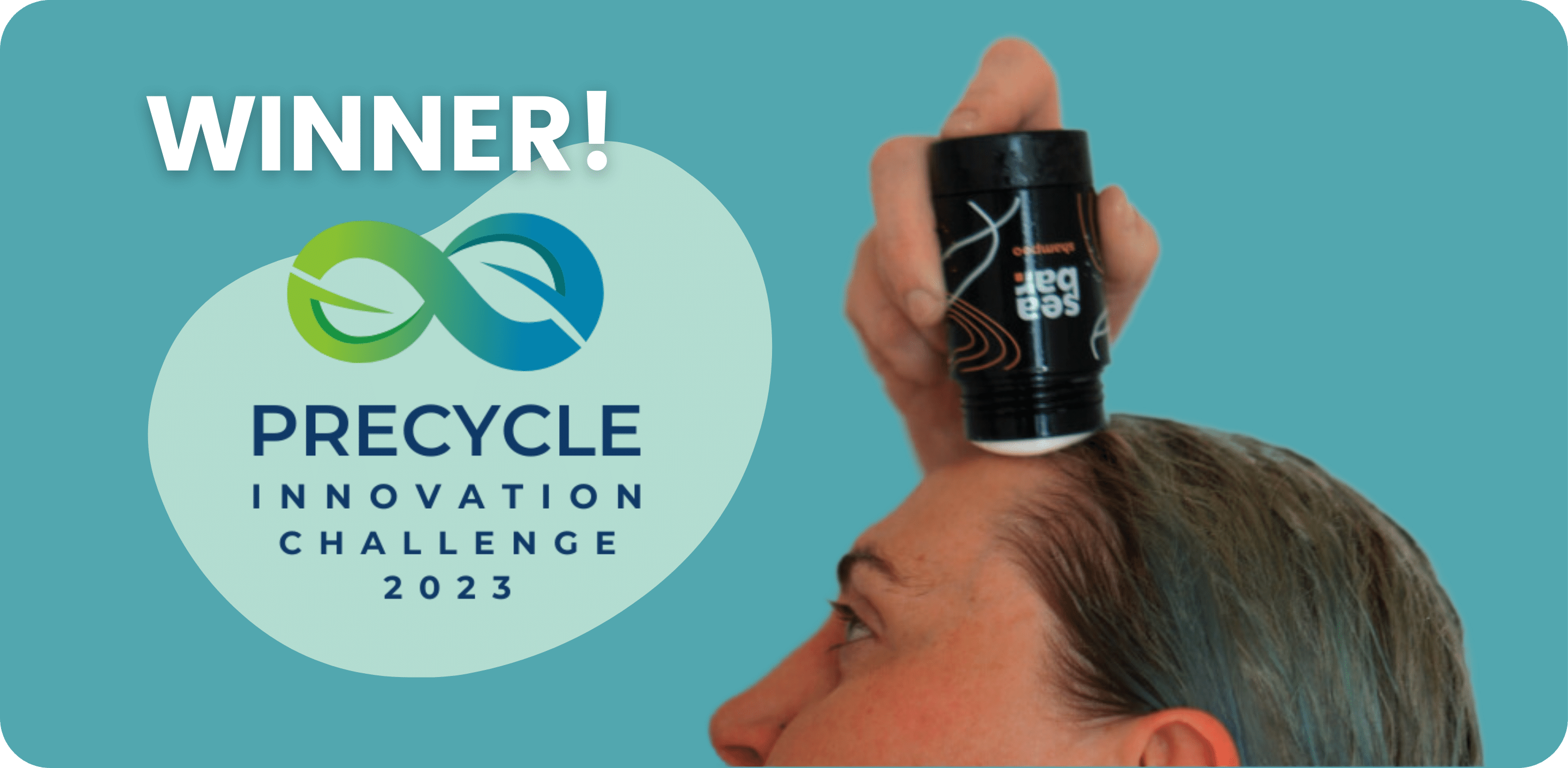The Recycling Myth

For as long as I can remember, I’ve been told to recycle-- recycle my bottle, recycle my cans, recycle my plastic bags.
Each year the recycling rate has climbed in the United States from close to zero in the 1960s to around 35% by 2017 and that’s a good thing. Right???
Well, it’s more complicated than recycling advocates would have you think.
In this post, we will look at the real reason recycling rates are so low (hint: it has nothing to do with shaming you into recycling more) and why there is only one real solution to plastic recycling.
But before we dive into they why, lets look at where the modern recycling push came from.
A Brief History of Recycling
There is archeological evidence of recycling dating back thousands or years, but it didn’t’ look like our modern system.
In the past there were no recycling bins, no trucks. The notion of leaving your recycling on the curb for someone to melt down and make new again would have seemed absurd to our ancestors. Their idea of recycling was to, as the old saying goes, “use it up, wear it out, make it do or do without.”
A more historically accurate representation of recycling would have been washing out your Ziplock bags and drying them on the laundry line, like my grandma used to. We would tease her for it… we couldn’t have been more wrong.
In the late 1800s, as garbage collection became industrialized in urban areas we toyed briefly with large-scale recycling as some companies began sorting the trash and selling the valuable finds back to industry. That continued for as long as it was profitable, but as our culture shifted to a throw a way culture this quickly fell out of favor. By the 1920s large-scale recycling was nearly unheard of.
There was a brief patriotic spike in recycling rates as World War II caused demand for raw materials to surge. This led to high demand (and high prices) for old rubber, paper, metal… basically anything needed to run the war machine.

It wasn’t until the 1960s that recycling became linked to the environmental movement. A few dedicated souls saw the destruction we were causing to our environment and began recycling.
But this well-intentioned environmental zeal was co-opted by one of the most effective corporate Greenwashing campaigns of all time, giving rise to recycling as we know it today.
The Recycling Myth
Let’s dive into the roots of our recycling system.
Many people trace much of our modern recycling system to the awareness created by the famous (infamous?) “Crying Indian” ad in 1971. This ad by the “Keep America Beautiful” organization was transformational. Their stated goal is to “end littering, to improve recycling, and to beautify American communities.”
The “Crying Indian” ad catapulted Earth Day, and recycling into the national consciousness.
At first glance the image of the “Indian” paddling his canoe through trash infested waters with the message “People start pollution, people can stop it” sounds good.
To many however this ad is deeply problematic for several reasons (not the least of which the “Indian” is actually Italian American actor Iron Eyes Cody, but that’s a rant for a different day).
What if I told you that Keep America Beautiful was an organization founded by large bottle manufacturers? What if I told you they started it in order to fight against can and bottle deposits that many states were beginning to pass?
Bottle deposits have been proven over and over to be one of the most effective ways to keep cans and bottles from ending up as litter, so why would an entity who’s stated mission is to “end littering” be opposed to bottle deposits??
In her film Gone Tomorrow. The Hidden Life of Garbage, Heather Rogers says that Keep America Beautiful is one of America’s first corporate greenwashing fronts.
By focusing the national conversation on “ending littering”, Keep America Beautiful has successfully transferred the failing of pollution from industry to individuals.
They have convinced us that if everybody will just do their part and sort their trash, we won’t have pollution.
Their argument is that if individuals are responsible enough, then it doesn’t matter what materials they make their packaging out of. If litter ends up in the environment it’s because some knucklehead littered… the fact that it is made out of plastic that won’t break down for millennia isn’t even mentioned.
It wasn’t that long ago that soda and milk were sold in glass bottles that you returned to the store to be washed and reused…
But hauling and washing bottles is more expensive than a plastic bottle that costs a few pennies to make.

Industry knew that they could (as an economist might say it) externalize the cost of the bottle disposal then they could pad their bottom line. But for that to work they had to convince you to happily pay that cost for them.
I am in no way saying recycling is bad. We should close the loop and reuse materials as many times as possible.
What I am saying, is there are responsible ways to do that. Those responsible ways start with the packaging that is used, because not all materials are created equally when it comes to recycling.
The tale of two recycling streams
If you start looking at the data behind recycling, you see a tale of two waste streams… one of recycling for items that are profitable to recycle. The other, plastic, that is unprofitable to recycle.
From the very beginning, recycling has always been about saving money. If an item is more valuable than the cost of recycling, it gets recycled. If it’s not… it ends up in the landfill.
There’s a reason there are commercials on TV advertising offers to buy your gold, but you’ll never see an ad for someone trying to buy your used milk jug (or your diamonds).
In the United States, our recycling rates range from a high of 66% for paper recycling down to a paltry 8% for plastic.
To determine why that is and determine which products are valuable and which aren’t, we need to look at a couple of factors:
- How difficult is it to process the materials from waste into new products?
- How expensive is it to create new “virgin” versions of the material?
- How stable is the pricing for the recycled product?
- How long is the recycling life cycle, i.e.: how times can something be recycled and remade into a product before it must be “down cycled”?
I hope this graph with data from the Environmental Protection Agency (EPA) is an easy way to put that into perspective.

Looking at the graph, it becomes more obvious why we produce 35 millions of tons of plastic waste each year in the United States and recycle less than 3 million tons…
No matter how many public awareness campaigns we run, no matter how many of our neighbors we shame into doing a better job of recycling nothing will change the fact that plastic recycling doesn’t make economic sense.
If it made sense plastic recycling rates would be higher.
Why Plastic Recycling Doesn’t Work
As wonderful as plastic is as a material, it is the worst for recycling.
It is notoriously difficult to process. With so many different types of plastic, which are often mixed in the same product, it makes it very difficult to recycle. The price for “virgin” plastic is directly tied to the price of oil. When gas is cheap, so is virgin plastic… This creates a boom and bust cycle for plastic recyclers, making it hard for them to stay in business through the down times. Plus, plastic can only be recycled once or twice before it must be down cycled into things like insulation for sleeping bags or landfill liners…
Just take a look at this data from the same EPA numbers I referenced above showing what percentages of each material get recycled, burned, or end up in the land fill.

As you can see recycling rates for plastic is abysmally low compared to other materials…and that low recycling rate is directly tied to the profitability of recycling plastic.
No matter how many public awareness campaigns we run, no matter how many of our neighbors we shame into doing a better job of recycling nothing will change the fact that plastic recycling doesn’t make economic sense.
If it made sense plastic recycling rates would be higher.
The Only Solution
I hope it’s clear by now that plastic recycling doesn’t work.
We will never be able to recycle our way out of the plastic crisis. Manufacturers have systematically shifted the burden of disposing of their packaging onto and onto the environment. They have made it perfectly clear that they aren’t going to change unless they are forced to.
The only way to force them to change is to get enough people to vote with their dollars.
Choose to purchase products not packaged in plastic.
There is a reason Recycling comes last in Reduce, Reuse, Recycle. And it's because it's the least effective of the three in terms of reducing your impact on the planet.
In fact I'd argue recycling as we know it today is little more than a fairy tale we've been sold to make us feel good about throwing away perfectly good stuff just to buy it again new... follow the money on that one…
We need to stop pretending recycling your plastic is going to solve anything. Let’s call plastic recycling what it really is, throwing something away twice.
My point isn’t that we shouldn’t recycle, it’s that we shouldn’t use recycling as an excuse to buy things that don’t need to exist in the first place.
At SeaBar we know that to reach our goal of a clean ocean we need to the two things that do work.
Which is why we are focused on reducing how many bottles you need to buy, and reusing the ones you do buy.
For example, one SeaBar shampoo bar lasts as long a 2-3 bottles of shampoo, reducing not only the number of plastic bottles created, but also slashing the transportation costs by 50-66%.
But wait there’s more!
Since our Bar Holders are reusable we can further cut the number of bottles the average household uses in a year from 72 to 2…
And the best part is not only does this reduce your impact on the planet, but it’s going to save you a bunch of money too.
Try salon quality hair care at drug store prices by switching to SeaBar
Experience a better way to wash your hair with our best selling Moisturize Bundle






